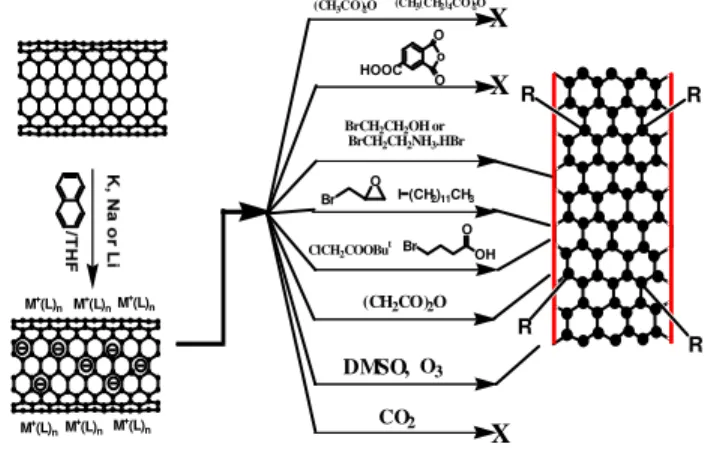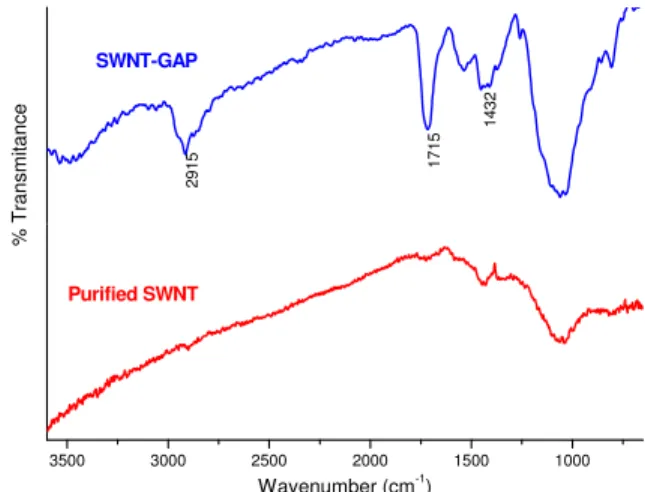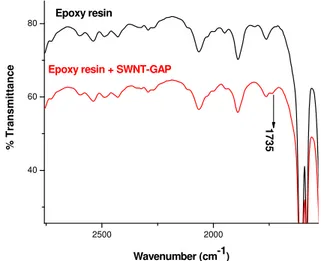Publisher’s version / Version de l'éditeur:
Proceedings of the 2007 NSTI Nanotechnology Conference and Trade Show, 1,
pp. 37-40, 2007-05-20
READ THESE TERMS AND CONDITIONS CAREFULLY BEFORE USING THIS WEBSITE.
https://nrc-publications.canada.ca/eng/copyright
Vous avez des questions? Nous pouvons vous aider. Pour communiquer directement avec un auteur, consultez la
première page de la revue dans laquelle son article a été publié afin de trouver ses coordonnées. Si vous n’arrivez pas à les repérer, communiquez avec nous à PublicationsArchive-ArchivesPublications@nrc-cnrc.gc.ca.
Questions? Contact the NRC Publications Archive team at
PublicationsArchive-ArchivesPublications@nrc-cnrc.gc.ca. If you wish to email the authors directly, please see the first page of the publication for their contact information.
NRC Publications Archive
Archives des publications du CNRC
This publication could be one of several versions: author’s original, accepted manuscript or the publisher’s version. / La version de cette publication peut être l’une des suivantes : la version prépublication de l’auteur, la version acceptée du manuscrit ou la version de l’éditeur.
Access and use of this website and the material on it are subject to the Terms and Conditions set forth at
Chemistry: the solution for making high performance SWNT-based
materials
Simard, Benoit; Martinez-Rubi, Yadienka; Guan, Jingwen
https://publications-cnrc.canada.ca/fra/droits
L’accès à ce site Web et l’utilisation de son contenu sont assujettis aux conditions présentées dans le site LISEZ CES CONDITIONS ATTENTIVEMENT AVANT D’UTILISER CE SITE WEB.
NRC Publications Record / Notice d'Archives des publications de CNRC:
https://nrc-publications.canada.ca/eng/view/object/?id=4fd45290-3285-4764-9090-c5665148f1d1 https://publications-cnrc.canada.ca/fra/voir/objet/?id=4fd45290-3285-4764-9090-c5665148f1d1Chemistry: The solution for making high performance SWNT-based materials
Yadienka Martinez-Rubi, Jingwen Guan, and Benoit Simard*
*
Steacie
Institute for Molecular Sciences, National Research Council of Canada,
100 Sussex Drive, Ottawa, K1A 0R6
e-mail :
Benoit.Simard@nrc-cnrc.gc.ca
;
Phone : 1-613-990-0977
Fax :1-613-991-2648
ABSTRACT
It is now widely accepted that chemistry is central to the development of high performance materials based on carbon nanotubes. Chemistry is necessary to ensure 1) consistent purity and 2) proper dispersion/exfoliation and, 3) proper interface with the matrices. Our work deals with single-walled carbon nanotubes (SWNT) and this paper focus on the functionalization of SWNT for integration in polymer matrices. In particular, we present cost-effective methods for rapid and efficient functionalization of SWNT based upon enhanced nucleophilic character of reduced SWNT. Reactions with various electrophilic reagents will be presented and discussed. Integration and binding with epoxy matrices will be discussed as well.
Keywords: Carbon nanotube, SWNT, chemistry, functionalization, epoxy resin, nanocomposite.
1 INTRODUCTION
Single-walled carbon nanotubes (SWNT) exhibit the best mechanical, thermal and electrical properties of any known material. Combined with their very high aspect ratios that can reach well over 1000, SWNT is the dreamed material for the fabrication of composites with ultimate performance. Unfortunately, despite the wide availability of SWNT and despite of many attempts, all SWNT-based composites reported to date showed poorer than expected performance, often worse than those of the pure matrices [1]. The main reasons for this are 1) highly variable purity and quality of the SWNT samples used, 2) poor dispersion/exfoliation and, 3) poor interface compatibility with the matrix. The second and third reasons are related to the intrinsic strong van der Waals interactions among the SWNT which lead to the formation of large bundles and to the intrinsic chemical stability of SWNT which makes binding to matrices rather difficult. It is now widely accepted that chemistry is central to the development of high performance materials based on SWNT. Chemistry can solve the problems associated with bundles and the lack of binding with the matrices. In the past 5 years, side-walled covalent functionalization on neutral SWNT has received considerable attention notably by the groups led
by Prato [2], Hirsch [3], Tour [4], Margrave [5], Haddon [6] and many others. Strategies to anchor all the practical functionalities have been developed. One drawback is that completion of the reaction at the single tube level requires substantial amount of time because the SWNT are inherently un-reactive and importantly they are bundled. The reaction proceeds on the outer tubes first which eventually ex-foliate to expose the second layer to the reagents and so on. Reaction completion takes several hours, even days. Recently, Penicaud et al. [7] showed that SWNT can be readily ex-foliated in standard solvents by reduction with alkali metal through electron transfer mediated by alkali-naphthalene-THF complexes. As the SWNT get charged negatively, they ex-foliate as a result of electrostatic repulsion. This is an important practical advance because it readily allows chemistry at the single tube, thus saving considerable amount of time. As chemical processing is the major cost associated with the integration of SWNT in advanced materials, any reduction in processing cost makes industrial utilization of SWNT more plausible. In addition, reduced tubes acquire higher nucleophilic character thus allowing new chemistry. Here, we explore such chemistry and demonstrate for the first time that reduced SWNT reacts with a variety of electrophilic reagents or radical donor/acceptors. In particular, we have developed a rapid functionalization procedure that takes only minutes rather than hours to effect side-walled functionalization. We have integrated these functionalized SWNT into thermoset resins of various grades and obtained significant improvements in mechanical properties. Some of these data will be presented therein.
2 CHEMISTRY OF REDUCED SWNT
2.1 Materials
The studies have been carried out with laser-grown materials prepared according to the two-laser method developed in our laboratory and reported previously [8,9]. The raw material has a purity estimated to 70-80% using a combination of characterization methods such as transmission electron (TEM) and scanning electron microscopy (SEM), Raman and optical spectroscopy,
thermogravimetric analysis (TGA) and porosity measurements. A typical Raman spectrum of the raw material is shown in Figure 1. Our Raman characterization is done with power density low enough for the Raman beam to be in the non-invasive mode. Thus, our Raman spectra provide an accurate assessment of the quality of the SWNT samples. The raw SWNT are purified to a purity of at least 90% through an in-house process that will be reported in detail elsewhere. The purification does not employ acid treatments but only flotation, sedimentation and extraction cycles that leave the side-wall intact as determined through Raman spectroscopy (Figure 1). All chemicals (reagent grade, 97-99%) were purchased from Aldrich. 500 1000 1500 2000 2500 3000 0.0 0.2 0.4 0.6 0.8 1.0 Raman Shift (cm-1) Int e nsity (a .u .) Raw SWNT Purified SWNT
Figure 1: Raman spectra of raw and purified SWNT. Note
that the relative intensity of the D-Band near 1350 cm-1 is
smaller for the purified material.
2.2 One-pot preparation of reduced SWNT
Our approach follows a modified version of the original procedure reported by Penicaud et al [7] and involves the use of alkali-naphthalene-THF complexes. In Penicaud’s original procedure, the alkali-naphthalene-THF complex was first prepared and then in a second step poured over the SWNT. Here, we use a one-pot approach in which the alkali metal and the naphthalene are added to a sonically-dispersed suspension of SWNT in THF.
In a typical experiment, 50 mg of SWNTs (4.16 mmol of carbon) was grounded with a mortar using a few drops of THF and then sonicated (Branson, model 5510 sonication bath) in 60 ml of dry THF until a well-dispersed suspension is formed. Small pieces of sodium (50 mg) metal and 1.4 mM of naphthalene were added into the suspension through which N2 was sparged. The mixture was stirred overnight at room temperature.
2.3 Reaction of reduced SWNT
Reduced SWNT have higher nucleophilic character than neutral SWNT and hence exhibit higher reactivity towards various reagents. Figure 2 shows various reactions schemes and their outcome. Detail of preparation can be obtained from the authors.
M+(L) n M +(L) n M+(L) n M+(L) n M+(L) n M+(L) n R R R R (CH2CO)2O CO2 X O3 OH Br O I (CH2)11CH3 O Br DMSO, (CH3CO)2O (CH3(CH2)4CO)2O o O HOOC O X X BrCH2CH2OH or BrCH2CH2NH3.HBr ClCH2COOBut
Figure 2: Reaction schemes with various reagents. As shown in Figure 2, reduced SWNT do not react with acetic anhydride, hexanoic anhydride, 1,2,4-benzene tricarboxylic anhydride, and carbon dioxide.
The reactivity with DMSO is noteworthy. Penicaud et al, reported that reduced SWNT were soluble in DMSO but our work shows unequivocally that reduced SWNT react with DMSO. As a matter of the fact, a gas, likely a light hydrocarbon such as ethane is liberated during the course of the reaction and the Raman spectrum (Figure 3) shows a significant increase in the D-band.
500 1000 1500 2000 2500 3000 0.0 0.2 0.4 0.6 0.8 1.0 Raman Shift (cm-1 ) Int e ns it y ( A rb . U n it ) Purified SWNT negatively charged SWNT plus DMSO
Figure 3: Raman spectra of purified SWNT and after reaction of reduced SWNT with DMSO. Note the significant increase in the D-band intensity resulting from
the functionalization of the walls of SWNT.
Reduced SWNT, which are obviously good reducing agents are particularly reactive towards strong oxidizing
agents such as peroxides. The process is depicted in Figure 4. The advantage of this process is that side-wall functionalization at the single SWNT occurs at room temperature within minutes rather than hours or even days under refluxing conditions for the corresponding reaction with neutral SWNT. Functionalization degrees of 1C % is typically achieved, largely enough for effective binding to various matrices.
Figure 4: Rapid functionalization of reduced SWNT with carboxylic functional groups.
Figure 5 shows the Raman spectrum of the functionalized SWNT obtained from the scheme shown in Figure 4 and for which R = -CH2-CH2-CH2-COOH (from glutaric acid acyl peroxide (GAP). The reaction leads to a substantial increase in the D-band intensity indicating side-wall functionalization. 500 1000 1500 2000 2500 3000 0.0 0.2 0.4 0.6 0.8 1.0 Raman Shift (cm-1) In te ns it y (a .u. ) SWNT-GAP Purified SWNT
Figure 5: Raman spectra of pristine SWNT and functionalized SWNT resulting from the reaction with glutaric acid acyl peroxide according to the reaction scheme
shown in Figure 4.
The identity of the functional group anchored on the side-wall of SWNT can be ascertained by infrared spectroscopy. Figure 6 shows an infrared spectrum of the SWNT material obtained following the reaction shown in Figure 4 in which the reagent was glutaric acid acylpreroxide. Features associated with the carboxylic
functionality at 1715 cm-1 and C-H stretch at 2915 cm-1 are
clearly observed indication that the functional moiety anchored on the side-wall of SWNT is indeed –CH2-CH2-CH2-COOH. A functionalization level of 1C % was determined using ICP-MS by substituting the acidic proton with Na which then served as probe. A very similar value
was obtained with TGA by measuring the mass loss upon heating. The –CH2-CH2-CH2-COOH moiety desorbs at about 300°C. 3500 3000 2500 2000 1500 1000 % T ran s m it an c e 143 2 Wavenumber (cm-1) Purified SWNT 17 15 29 15 SWNT-GAP
Figure 6: Infrared spectrum of SWNT-CH2-CH2-CH2-COOH from reacting glutaric acid acyl peroxide with
reduced SWNT.
3 INTEGRATION OF FUNCTIONALIZED
SWNT INTO EPOXY MATRICES
Proper integration in matrices is crucial to obtain high performance materials. Integration involves dispersion and interface compatibility. Chemical functionalization as we have described allows resolving these two issues. Interface compatibility is achieved by covalent binding between the SWNT and the matrix. We have integrated functionalized SWNT into thermoset resins of various grades and obtained excellent dispersions that appear permanently stable. We have several efficient ways of binding the SWNT to matrices. One way related to the chemistry discussed before is through esterification of the carboxylic moieties anchored on the SWNT with the epoxide groups of epoxy resins as illustrated in Figure 7. Although the process is kinetically slow, it is amenable to industrial scale.
OH O + O O O OH
Figure 7: Esterification reaction of SWNT-COOH with epoxide moieties
.
Figure 8 illustrates, even though qualitatively, the homogeneity of the resulting dispersion as compared to the case where pristine SWNT are mixed into the resin. Whether the esterification reaction occurred can be - +N - +N - +N - +N Na+ Na+ Na+ Na+ THF Purified Radical anion of + R C O O O C R O R R R R
determined through infrared spectroscopy as shown in
Figure 9. The feature at 1735 cm-1 is associated with the
ester linkage.
Figure 8. Dispersion of SWNT in epoxy resin. Left- after esterification, right- with no functionalization.
2500 2000 40 60 80 % Transmi tt a nce Wavenumber (cm-1) 1735 Epoxy resin
Epoxy resin + SWNT-GAP
Figure 9: Infrared spectra of neat epoxy resin (top) and epoxy resin functionalized with SWNT-COOH.
The covalent attachment of SWNT to epoxy resin does not allow for high loadings. Significant increase in viscosity occurs upon loading and for practical purposes only loadings below 1wt% are possible.
4 MECHANICAL PERFORMANCE
Significant improvements in mechanical properties have been obtained with small loadings. For example, with as little as 0.2wt% of functionalized SWNT, improvement of 60% in K1C has been obtained. Improvement up to 300% is possible.
ACKNOWLEDGEMENTS
This work was supported by the financial contributions of the National Research Council of Canada
REFERENCES
[1] J. N. Coleman, U. Khan, W. J. Blau, Y. K. Gun’ko, Carbon, 44, 1624-1652 (2006).
[2] D. Tasis, N. Tagmatarchis, A. Bianco, and M. Prato, Chem. Rev., 106, 1105-1136 (2006)
[3] A. Hirsch and O. Vostrowsky, Top. Curr. Chem., 245, 193-237 (2005).
[4] J. L. Bahr and J. M. Tour, J. Mat. Chem., 12, 1952-1958 (2002).
[5] V. H. Khabashesku, W. E. Billups and J. L. Margrave, Acc. Chem. Res., 35, 1087-1095 (2002).
[6] S. Niyogi, M. A. Hamon, H. Hu, B. Zhao, P. Bhowmik, R. Sen, M. E. Itkis, and R. C. Haddon, Acc. Chem. Res., 35, 1105-1113 (2002).
[7] A. Penicaud, P. Poulin, A. Derre, E. Anglaret, and P. Petit, J. Am. Chem. Soc., 127, 8-9 (2005)
[8] C. T. Kingston, Z. J. Jakubek, S. Denommee, and B. Simard, Carbon, 42, 1657-1664 (2004).
[9] C. T. Kingston and B. Simard, J. Nanosci. Nanotech., 6, 3677-3684 (2006)


